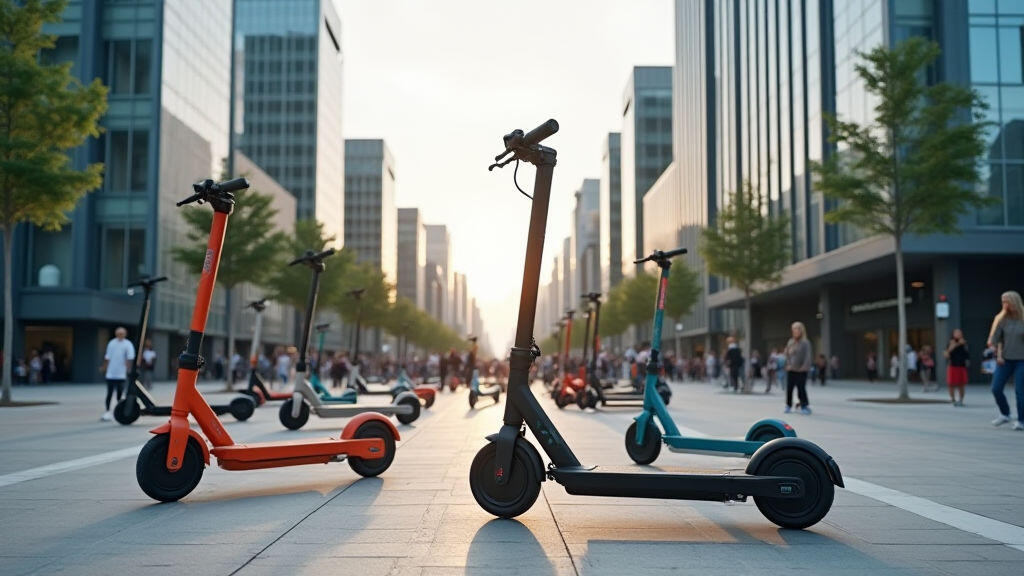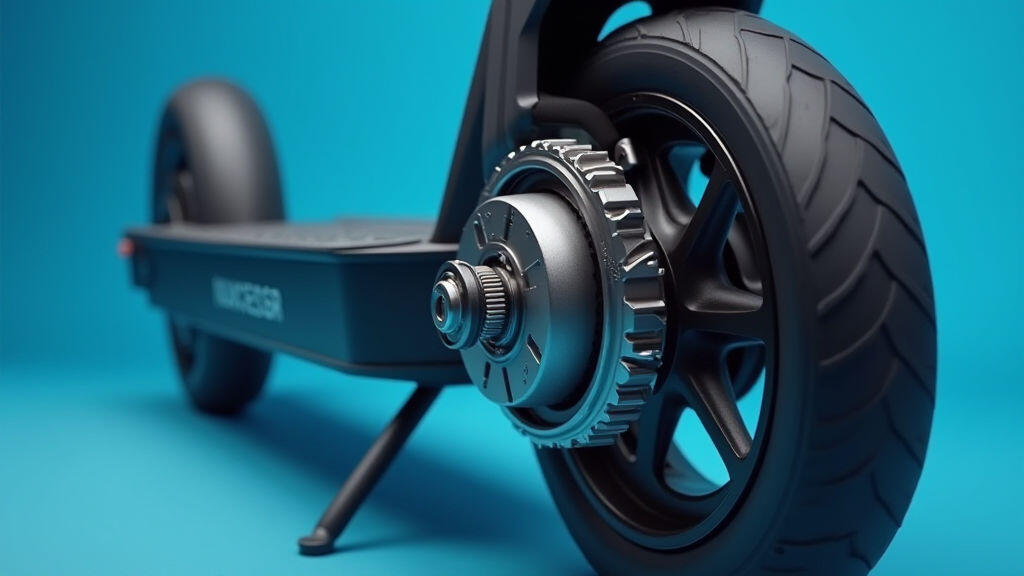Anjing Road, Xiaolan, Zhongshan, Guangdong, China
info@mes-drive.com
08.00 AM-09.00 PM

Introduction
The past year has seen an explosive rise in electric scooters (e‑scooters) across cities worldwide. From bustling streets of New York to compact alleys in European capitals, dockless scooters have become a symbol of convenient, low‑carbon urban mobility. According to a recent market‑research report, e‑scooter deliveries grew by 62 % in 2023, with 120 million active riders worldwide. While the trend feels vibrant, the technology quietly powers the shift: the Gear Motor, also known as the Reducer Motor, sits at the heart of each scooter’s propulsion system. This article explores how the current surge in e‑scooter popularity fuels demand for high‑performance Gear Motors and how these motors are evolving to meet the new expectations of speed, durability, and safety.
Why the Gear Motor Matters
A typical e‑scooter motor draws power from a lithium‑ion battery and converts electrical energy into mechanical motion. The motor’s shaft spins at extremely high speeds—often above 20 000 RPM—yet the rider only needs a few inches per second of forward velocity. A Gear Motor reduces this high RPM to a range that the scooter’s wheels can use efficiently. It also multiplies torque, transforming the motor’s raw power into the push needed to splash up to 25 mph or climb a 12‑degree hill.
In plain terms, the Gear Motor is the translator between the fast‑moving engine and the practical motions felt by the rider. Its design directly affects:
Thus, a compact, durable, and efficient Gear Motor is a pivotal differentiator for manufacturers looking to capture rising market share.
The E‑Scooter Surge and Market Demand for Gear Motors
Scale of Production
Companies such as Lime, Bird, Gogoro, and newer entrants like Helbiz have aggressively expanded fleets. To support thousands of scooters per day, each company must manufacture millions of Motor Units yearly. Gear Motors are typically rated in the 200–350 W range for city models but can exceed 1.5 kW in “pro‑grade” scooters. The sheer volume increases the demand for mass‑produced, cost‑effective Gear Motors.
Technological Evolution
Early e‑scooters used brushed DC motors with simple planetary gearboxes. Today, brushless DC (BLDC) motors paired with advanced planetary or dual‑stage gear reductions provide higher efficiency and longer runtimes. The demand for “smart” Gear Motors—with integrated sensors for torque, temperature, and vibration—has risen as companies launch remote diagnostics and predictive maintenance features.
Regulatory Pressures
Local governments are tightening emissions and safety rules. Many cities now require minimum torque specifications for scooters used in higher‑traffic corridors. The Gear Motor’s capacity to deliver precise torque control meets these standards, while also enabling safety features like torque limiting to prevent rider injury during brakes or abrupt stops.
Urban Infrastructure Challenges
E‑scooters are often parked unsafely, exposed to moisture and impact. Manufacturers now militarily upgrade Gear Motors with sealed casings and robust bearings. These design adjustments increase the motor’s lifespan and reduce failure rates—a key factor for fleet operators who cannot afford mid‑service interruptions.
Case Study: The European “Fetch” Initiative
In 2023, the European Union launched the “Clean Mobility for All” initiative, granting €3 billion in subsidies to city bike‑share and scooter‑share programs. The funding prioritized batteries with longer ranges and motors that consumed less power. Consequently, suppliers such as Entis Motors (Germany) and Arizona Gear (USA) scaled up production of high‑efficiency Gear Motors with a focus on reducing torque ripple. Field tests demonstrated a 12 % increase in energy efficiency, directly translating to 1.4 kWh extra battery life per kilometer. This improvement sold to fleets that could reduce battery replacements by 25 % annually—an enormous cost saving in high‑turnover fleets.
Innovation Spotlight: Miniature Dual‑Stage Gear Motors
Ride‑hare’gi’R, a startup from Shanghai, introduced a dual‑stage gear motor that reduces motor RPM from 22 000 RPM to 1.2 RPM before engaging a final over‑drive. The two‑ stage design dramatically smooths torque delivery, eliminating “jerks” experienced at acceleration and braking. Early adopters report a 30 % decrease in rider perceived effort, especially on steep urban gradients. This kind of innovation becomes indispensable as operating regions include coastal cities with higher inclines, like San Francisco or Lisbon.
Challenges Ahead
While the trend is advantageous, Gear Motor manufacturers must tackle several hurdles:
Overcoming these challenges will keep Gear Motors competitive and scalable for the next wave of autonomous scooters, foldable e‑bikes, and even micro‑cars.
Conclusion
The electric‑scooter boom is no isolated fad; it is a signal of shifting urban mobility priorities. At the core of this shift lies the Gear Motor—an unsung hero translating electrical energy into the speed, torque, and durability riders expect. Market demand is accelerating, pushing manufacturers toward more efficient, smarter, and lighter Gear Motors. As cities continue to embrace low‑carbon transport solutions and governments invest in sustainable infrastructure, the Gear Motor’s role will only grow. For firms, mastering its design holds the key to staying ahead of a trend that is set to redefine the very feel of city streets for years to come.


Leave A Reply
Your email address will not be published. Required fiels are marked